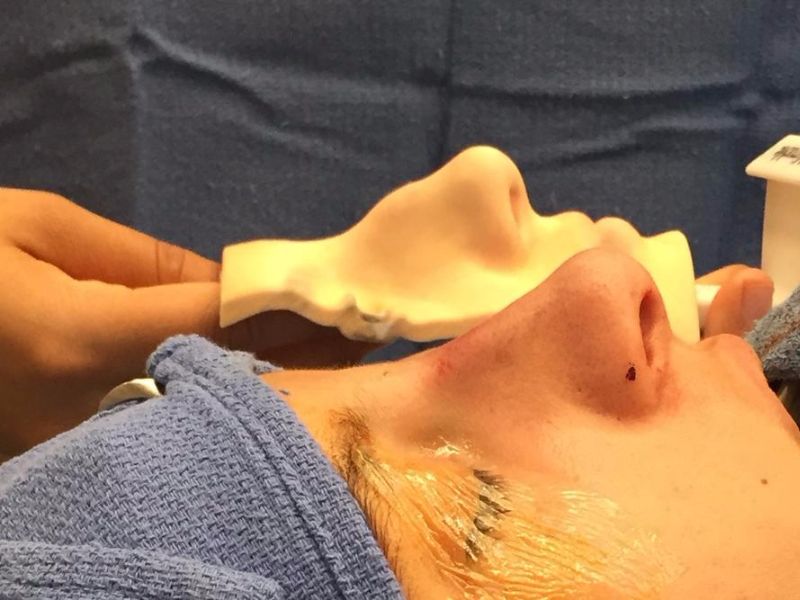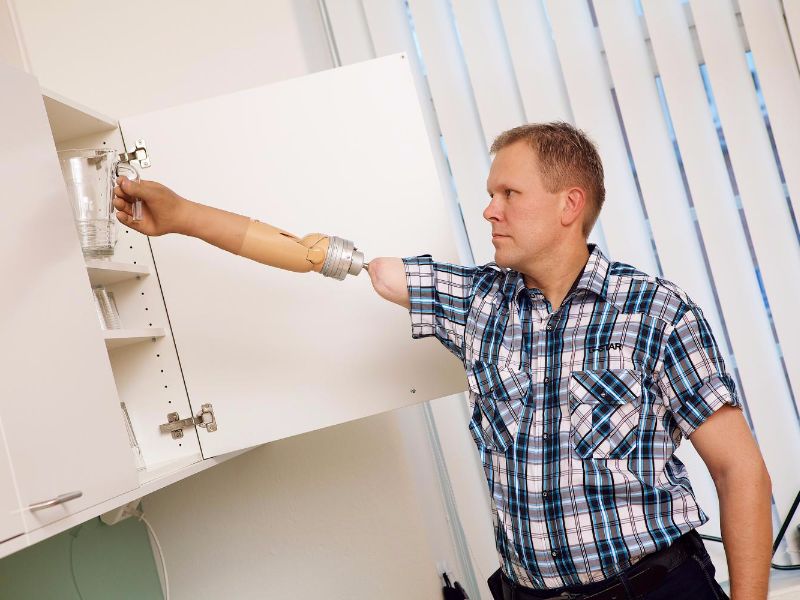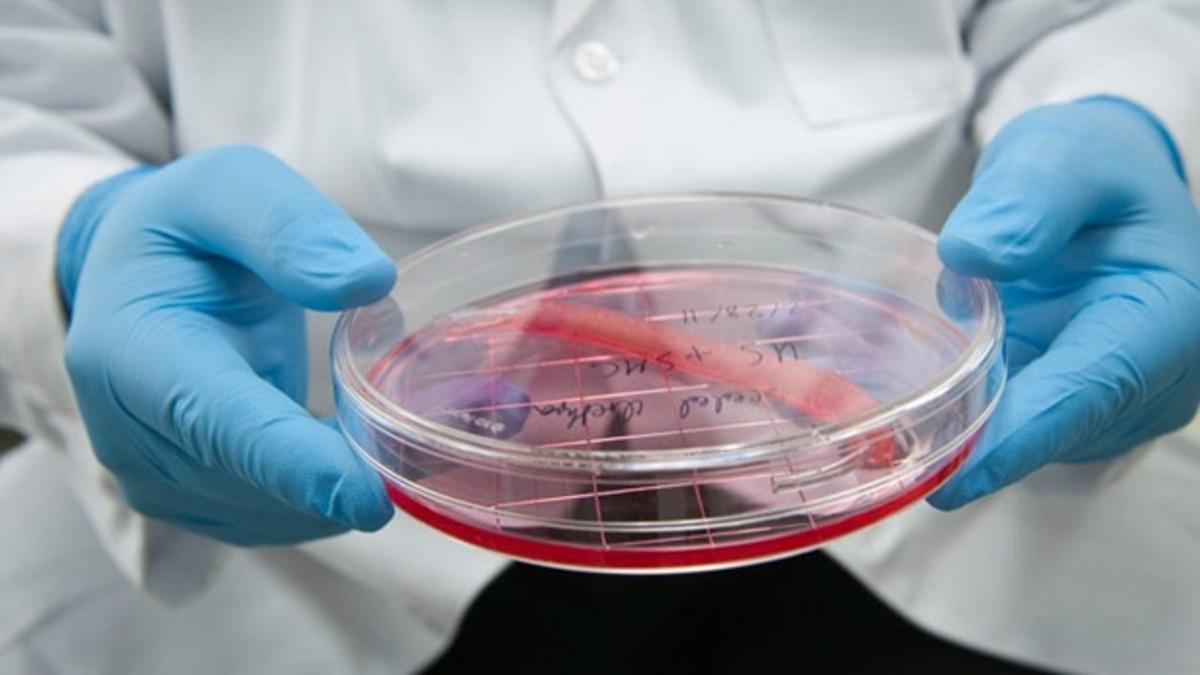These major technological advancements could change the face of plastic surgery in the next few decades.
4D technology? Virtual interaction? Prosthetic muscles? You could be forgiven for assuming we’re talking about science fiction. Thankfully, we’re not. All of these fanciful-sounding innovations may soon play a large and positive role in medicine and surgery. This includes plastic surgery, a field which, in an age of rapid technological innovation and transformation, is changing as much as any other.
We asked three experts to comment on 5 technologies that could change the face of plastic surgery in the next few decades. Read on to learn more.
1. 3D printing

When it comes to 3D printing, the future is now, as the saying goes.
In plastic surgery, 3D printing has mostly been used for modeling; that is, printing out models of structures and features (e.g. the nose), manipulating them on the computer to make them look better, and then printing them out again for comparison against the originals. This is already having an impact on preoperative surgical planning, optimizing outcomes, and other aspects of the surgical process.
So far, the technology isn’t really effective for producing the types of implants used in plastic surgery, says Patrick J. Byrne, MD, FACS, MBA, Professor and Director of the Division of Facial Plastic and Reconstructive Surgery at the School of Medicine and member of the Board of Directors at the American Academy of Facial Plastic and Reconstructive Surgery (AAFPRS).
“The constraint is on the quality of the produced structures, and our ability to get these structures to survive upon implantation in the human body,” he says. “It can be done, but with current technology the structures will not be able to withstand and survive the effects of scar contracture and poor blood supply.”
But he says that once researchers can crack the code to achieving product stability, things could rapidly progress.
Other plastic surgeons agree. “As 3D printers become cheaper and the technology for using these devices more sophisticated, the use of 3D printing for generating tissue and potentially organs will inevitably grow,” says Dr. Gregory A. Buford, MD, FACS, a board-certified plastic surgeon based in Englewood, Colorado. “The use of this practice in plastic surgery could be extended to address areas such as trauma reconstruction where printed materials could be used to replace lost areas of tissue.”
2. Biologic products

According to the Food and Drug Administration (FDA), a biological product is one that “replicates natural substances such as enzymes, antibodies, or hormones in our bodies.” Also known as biologics, these products represent the leading edge in medical science and research.
Biological products can be made of proteins, sugars, nucleic acids, or a combination of these substances. They can also be living entities, such as cells and tissues. Biologics are comprised of an array of natural resources deriving from humans, animals, and microorganisms.
In plastic surgery they are used as an alternative to synthetic materials and in some cases may offer even greater benefits, according to Boston plastic surgeon Sam Lin. Benefits can range from lower inflammatory response to protecting against early burn-wound progression. In the future, plastic surgeons may be able to use biologics as adjuncts or replacements for current tools, Lin says. And he says they may in some cases prove to be more accessible and less costly than synthetic products.
Biologics are an area of real interest to Byrne, who foresees an era of “generative immunology” in which some of the lessons of adaptive immunology as applied to cancer treatments are applied to regenerative medicine. One example of this that might be applicable in plastic/reconstructive surgery is the use of “donor tissue” (e.g., skin substitutes).
3. Personalized tissue engineering

From a medical perspective tissue engineering has already been used with some success. And in the future, it could mean that physical structures like ears, windpipes and skin can be grown in the lab and then implanted to restore form and function, according to Byrne.
The prospect of advances in tissue engineering is exciting to plastic surgeons because of the specialty’s emphasis on manipulation of tissue, adds Lin. “Plastic surgery is sometimes limited due to confinements of available tissue,” he explains, and this is something tissue engineering might be able to help tackle.
According to Lin, advancements in tissue engineering may aid plastic surgeons in providing patients with more options — such as autologous fat grafting and the use of skin flaps — and in optimizing outcomes.
However, Byrne points out that, historically, one of the biggest barriers in this area has been cost, which he says comes down to the business model.
“It is really expensive to grow human tissue in a lab if each ‘batch’ is for one person only,” he explains. “The breakthrough in the scalability will occur when we can ‘anonymize’ this process, so we can make such tissue present itself to the recipient in a manner which does not trigger a ‘host vs graft’ response. In theory there are ways this can be accomplished. Until that time it’s difficult to imagine wide scale application.”
4. Transplanting complex structures
In recent years, surgeons have made great strides in the transplantation of complex structures due to better understanding of anatomy, improvement in immunosuppressant therapies and greater knowledge of risk factors and complications on a case-by-case basis, according to Lin.
As a result, procedures as complex as full-face transplant have been successfully performed. However, at this stage such procedures are not performed on a mass scale, because many challenges remain.
“In this arena, the challenge is not only in finding a good donor but also in identifying whether or not the recipient (of the tissue) will be a good donor,” says Buford. “Although the tissue will be matched as closely as possible, it cannot be an exact match since it is coming from another human being and so will require the recipient to be on an immunosuppressive regimen for the rest of their life. Adhere to the regimen and the recipient may also be at increased risk for various other diseases such as cancer; stray from the regimen and the tissue will undoubtedly be rejected.”
But in the future, this may change. Many experts, such as Byrne, believe that doctors will become more successful at controlling the immune system, which will allow them to perform transplantation of complex structures on a wider spectrum of patients. “This could mean that it makes more and more sense to transplant faces, noses, eyelids, ears, etc.” he says.
5. Anti-aging breakthroughs

Many medical experts are convinced that coming breakthroughs will substantially slow or even reverse the aging process, including external signs of aging. These breakthroughs will likely lead to pharmaceutical and dietary treatments that will help people to look younger.
All of this raises the question: will plastic surgery be necessary? The experts we interviewed responded with a resounding yes.
“My personal guess is that demand for plastic surgery will increase if in fact humans live longer, healthier lives,” says Byrne.
Buford agrees. “As medical breakthroughs allow the general population to not only live longer but also live more vitally, plastic surgeons will actually become more important,” he says. “In Colorado, we are seeing 70 and 80 year olds living lives that are far different than seen 20-30 years ago. These people are active and simply do not want to look old. This segment of the population will, no doubt, be increasingly more adoptive of plastic surgery.”
And Lin points out that patients will always be in need of plastic surgery treatment unrelated to the aging process, such as reconstruction. He also points out that no matter what space-age tools the future may have in store, a skilled operator will always be needed. “Considering that plastic surgeons frequently move skin and tissue around, they are inherently knowledgeable of the aging process and uniquely positioned to best utilize these medical breakthroughs,” he says.
What else does the future of medicine hold?

While we can’t predict with precision what new plastic surgery-related innovations will come to fruition in the coming decades, odds are the abovementioned technologies will be involved.
Here are some other innovations Lin believes may be coming down the pike:
- Advancements in immunosuppression protocols based on new technologies stemming from areas such as biological products;
- Bioengineering advances in prosthesis that could lead to debate over alloplastic (synthetic materials) vs. autologous (natural materials) reconstruction;
- 4D imaging, using time as the fourth dimension. This could be useful in reconstruction for mapping the anatomy as well as mapping out functional outcomes;
- Digitalization of information, through which doctors may be able to precisely record and manipulate patients’ anatomical features manipulated to simulate postoperative results.
Lin also cites general technological advancements that could have a big impact; for example, innovative social media platforms, virtual interactive technology and artificial intelligence.
Byrne adds the following as possibilities:
- Prosthetic muscles and implantable electrical stimulators to drive them
- Implantable sensors that monitor and optimize the local tissue environment for health and vitality
- Tissue-engineered replacement eyes
And Buford predicts that plastic surgeons will continue to find creative ways to combine various procedures to create synergy, less downtime, and more natural results. Exactly which combinations they will be using that far down the road is anyone’s guess, he says.
In the meantime, stay tuned…
Cover photo: Tissue-engineered urethra, grown from the patient’s own cells. Photo courtesy Wake Forest Institute for Regenerative Medicine.










